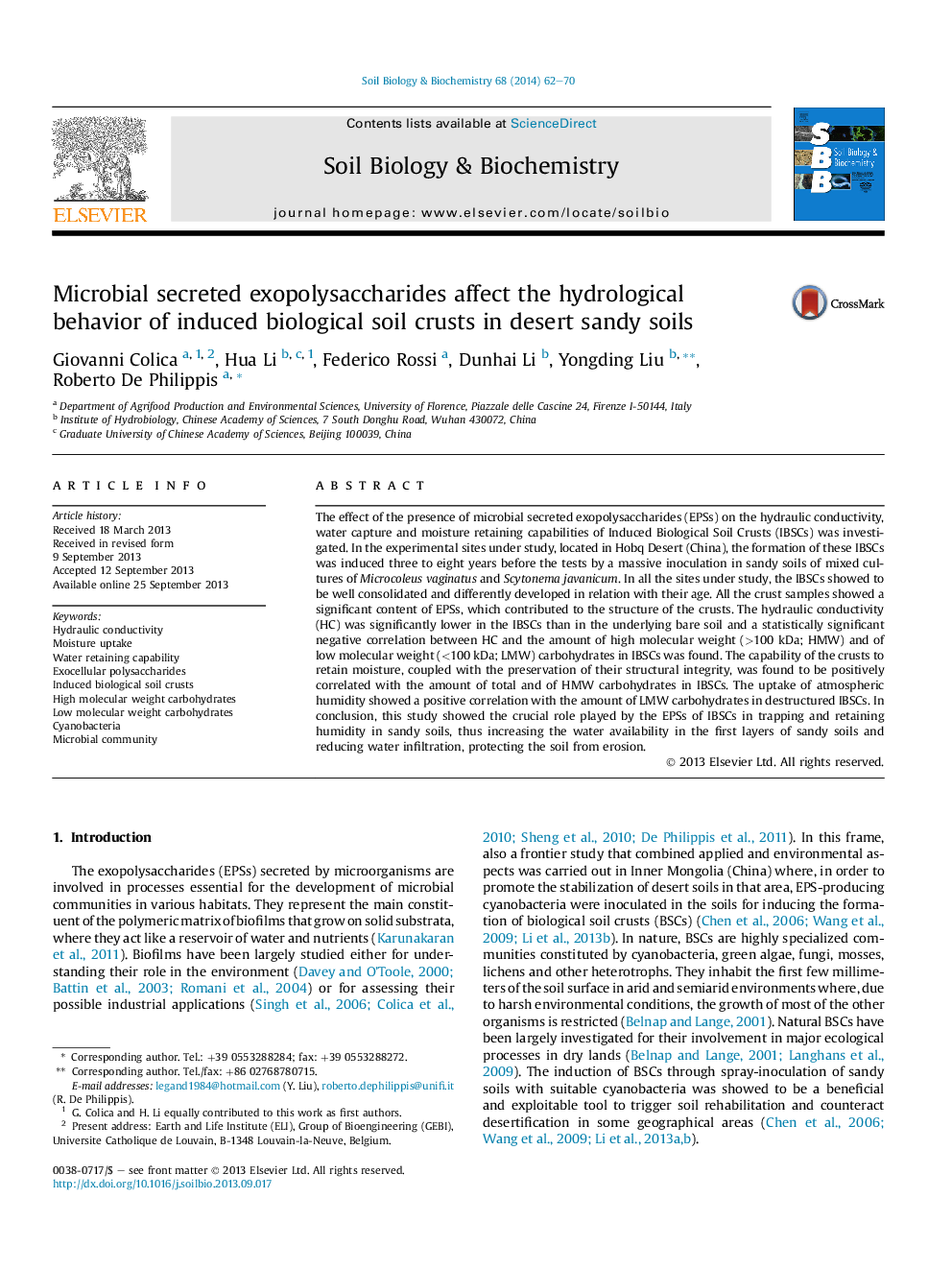| Article ID | Journal | Published Year | Pages | File Type |
|---|---|---|---|---|
| 8364969 | Soil Biology and Biochemistry | 2014 | 9 Pages |
Abstract
The effect of the presence of microbial secreted exopolysaccharides (EPSs) on the hydraulic conductivity, water capture and moisture retaining capabilities of Induced Biological Soil Crusts (IBSCs) was investigated. In the experimental sites under study, located in Hobq Desert (China), the formation of these IBSCs was induced three to eight years before the tests by a massive inoculation in sandy soils of mixed cultures of Microcoleus vaginatus and Scytonema javanicum. In all the sites under study, the IBSCs showed to be well consolidated and differently developed in relation with their age. All the crust samples showed a significant content of EPSs, which contributed to the structure of the crusts. The hydraulic conductivity (HC) was significantly lower in the IBSCs than in the underlying bare soil and a statistically significant negative correlation between HC and the amount of high molecular weight (>100Â kDa; HMW) and of low molecular weight (<100Â kDa; LMW) carbohydrates in IBSCs was found. The capability of the crusts to retain moisture, coupled with the preservation of their structural integrity, was found to be positively correlated with the amount of total and of HMW carbohydrates in IBSCs. The uptake of atmospheric humidity showed a positive correlation with the amount of LMW carbohydrates in destructured IBSCs. In conclusion, this study showed the crucial role played by the EPSs of IBSCs in trapping and retaining humidity in sandy soils, thus increasing the water availability in the first layers of sandy soils and reducing water infiltration, protecting the soil from erosion.
Keywords
Related Topics
Life Sciences
Agricultural and Biological Sciences
Soil Science
Authors
Giovanni Colica, Hua Li, Federico Rossi, Dunhai Li, Yongding Liu, Roberto De Philippis,
